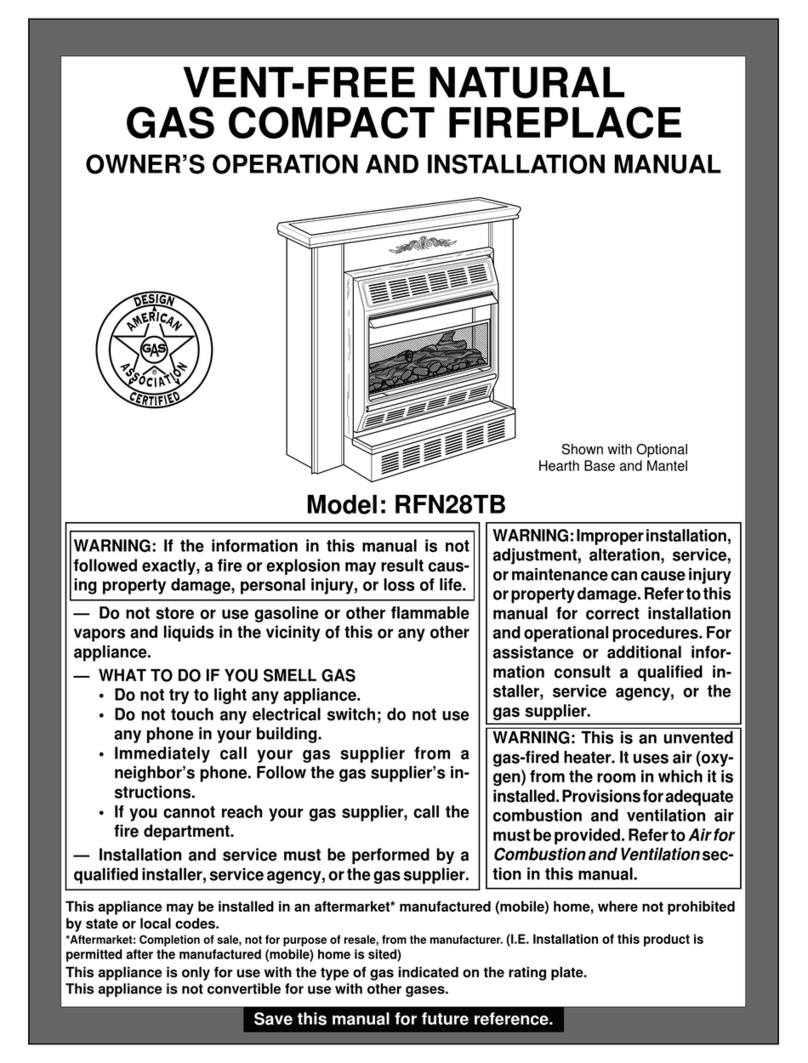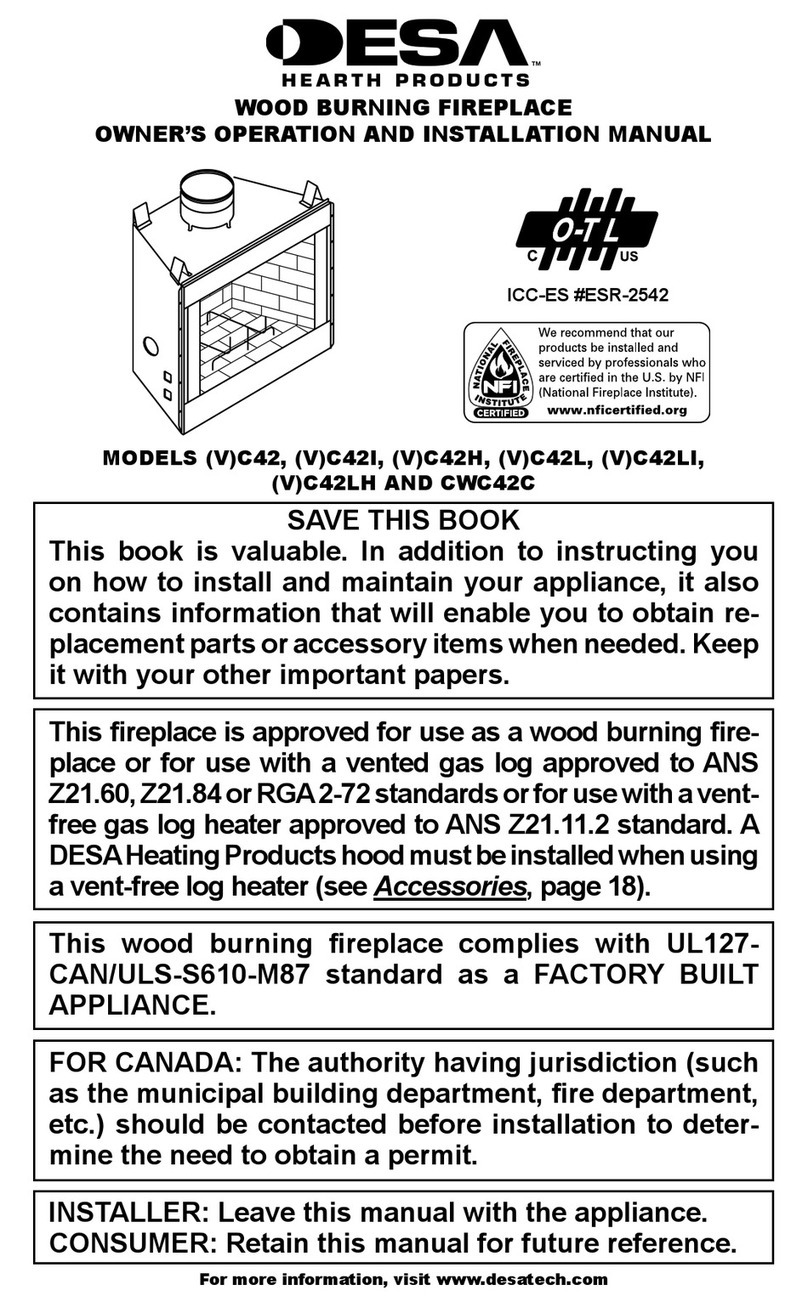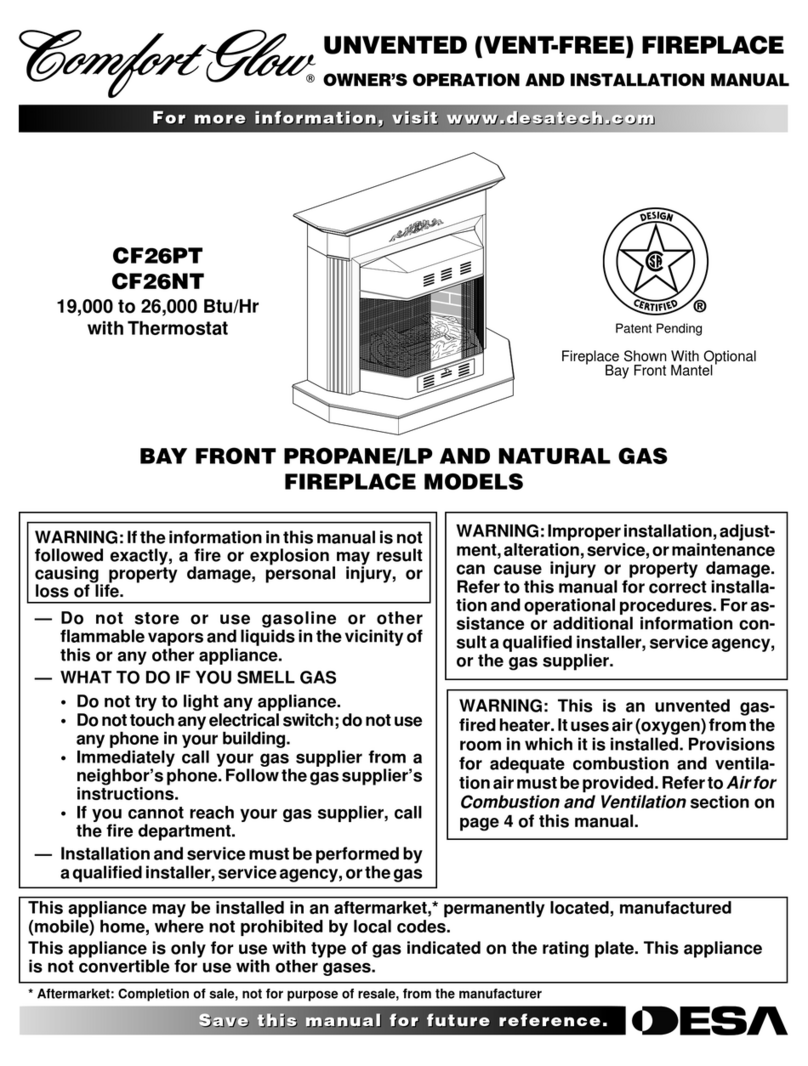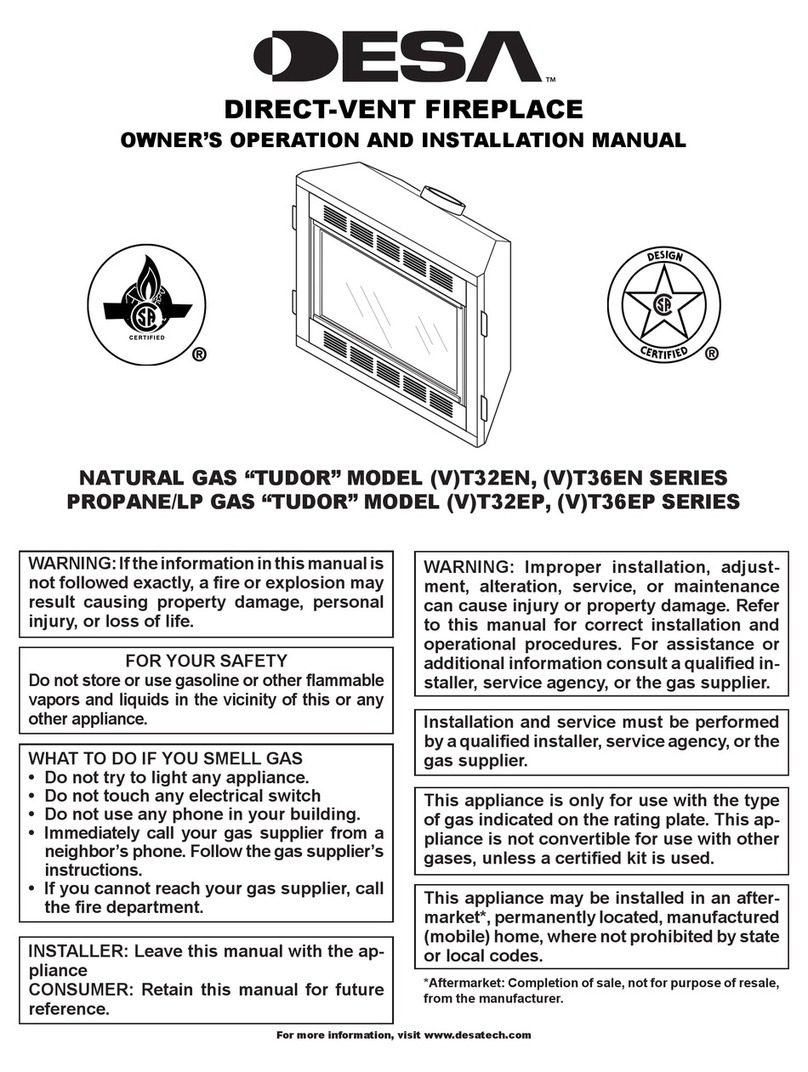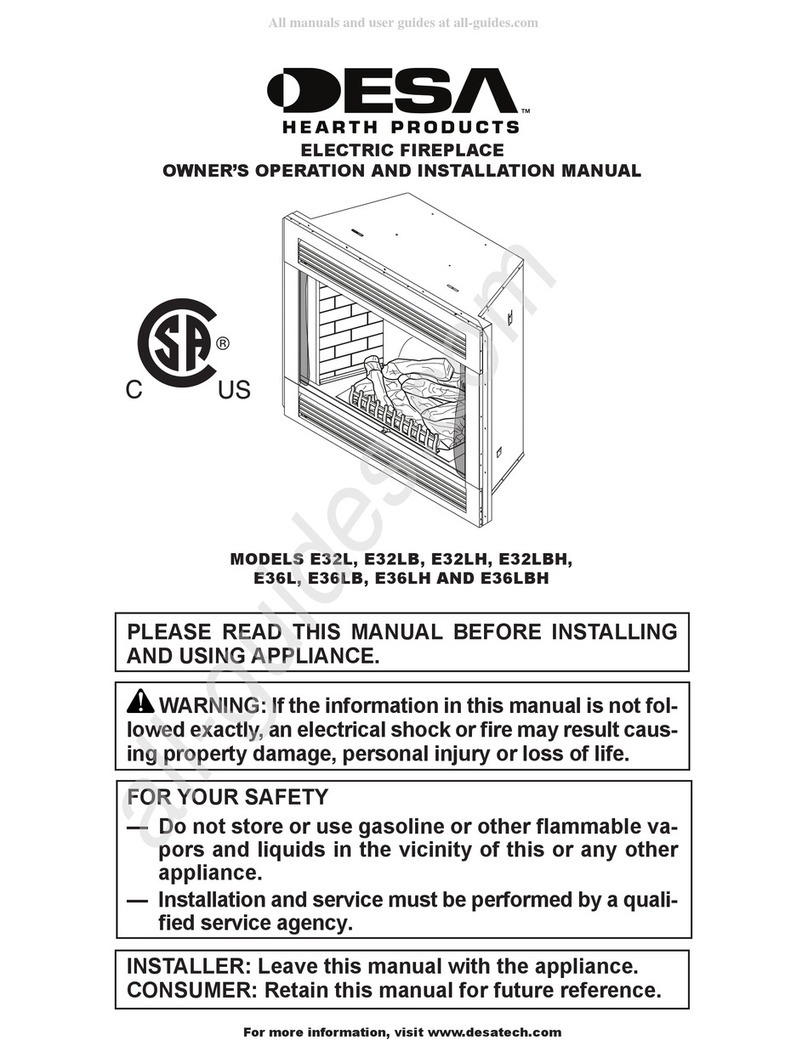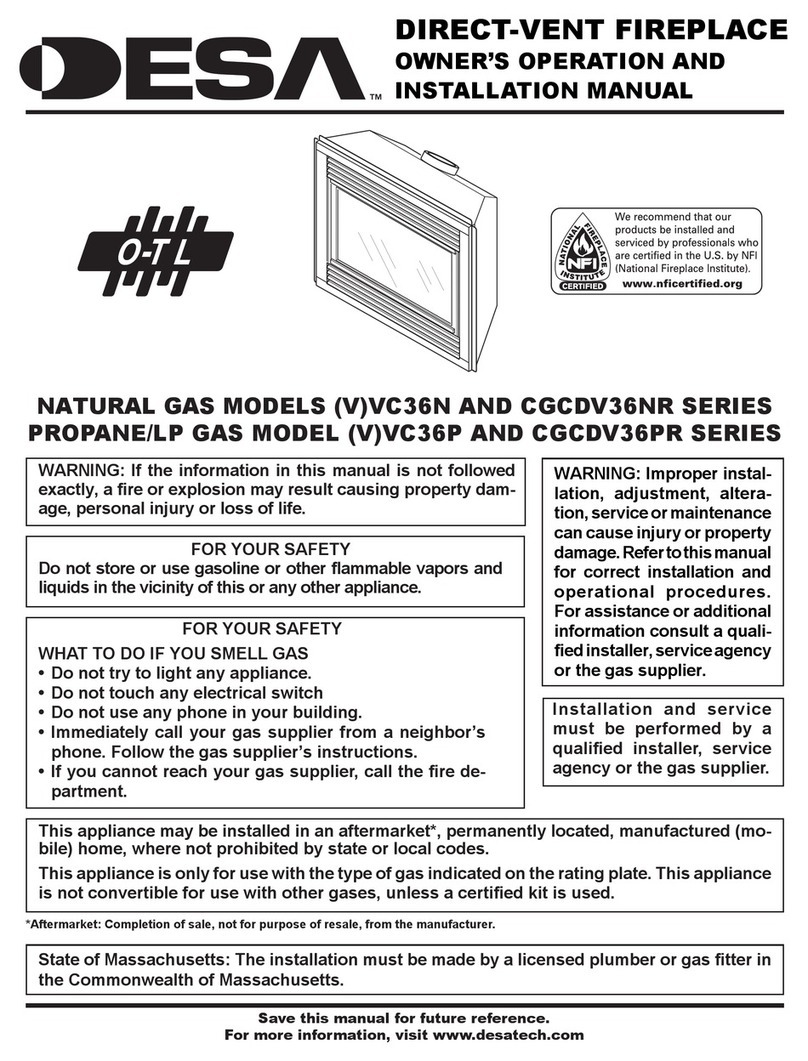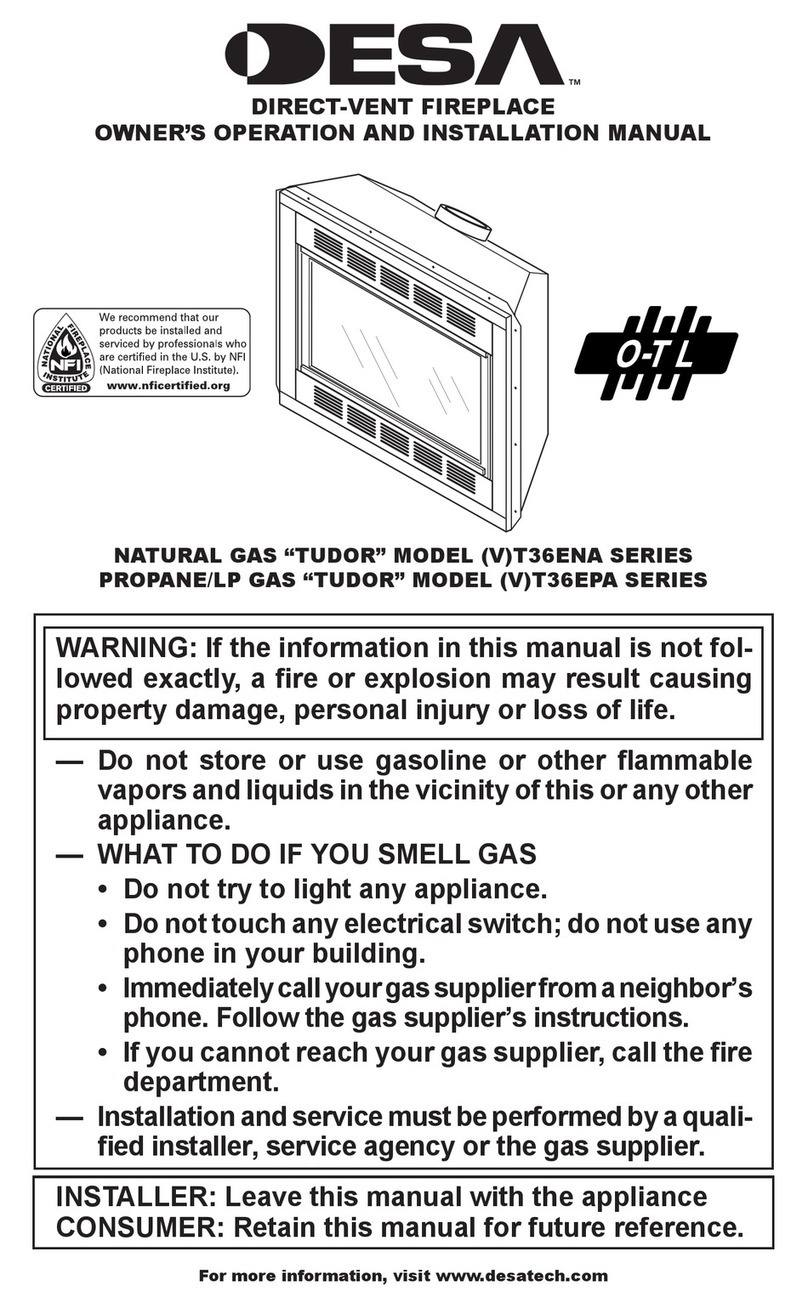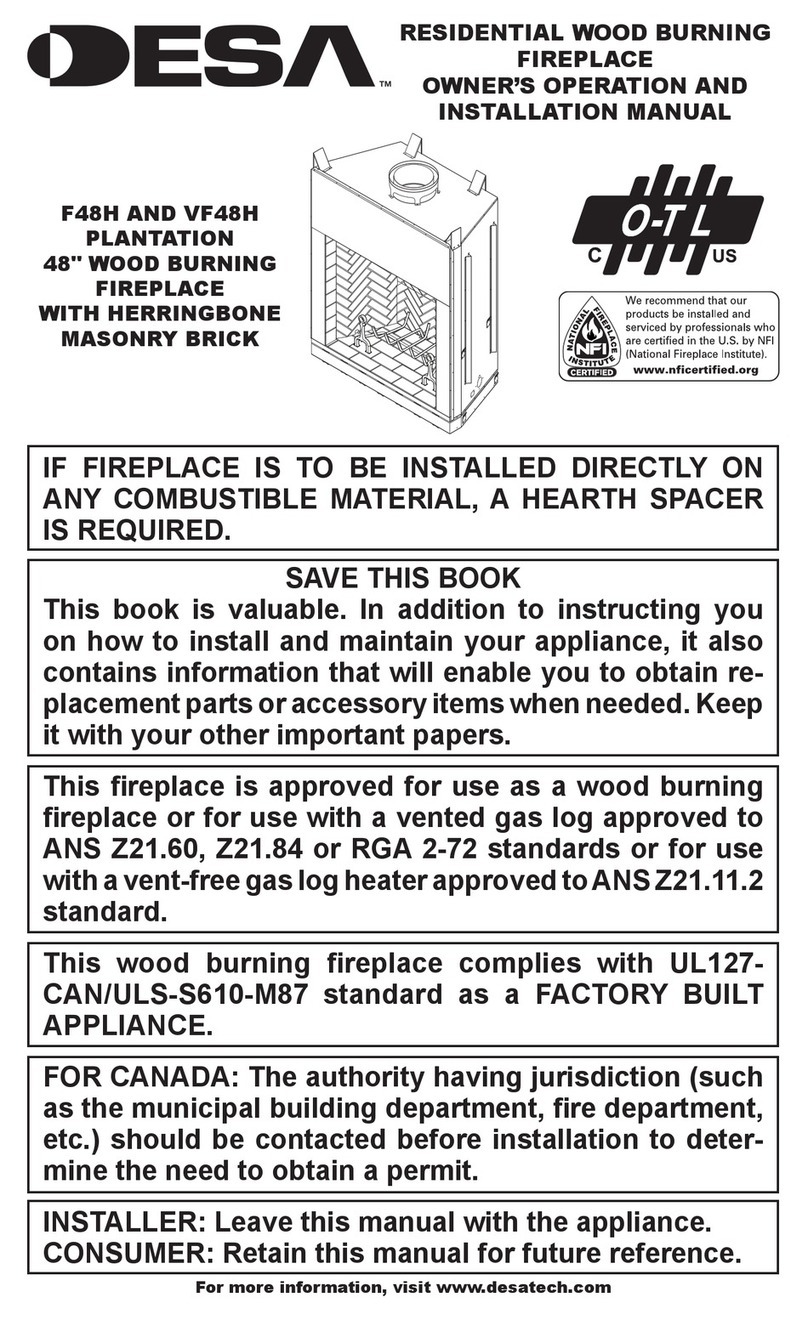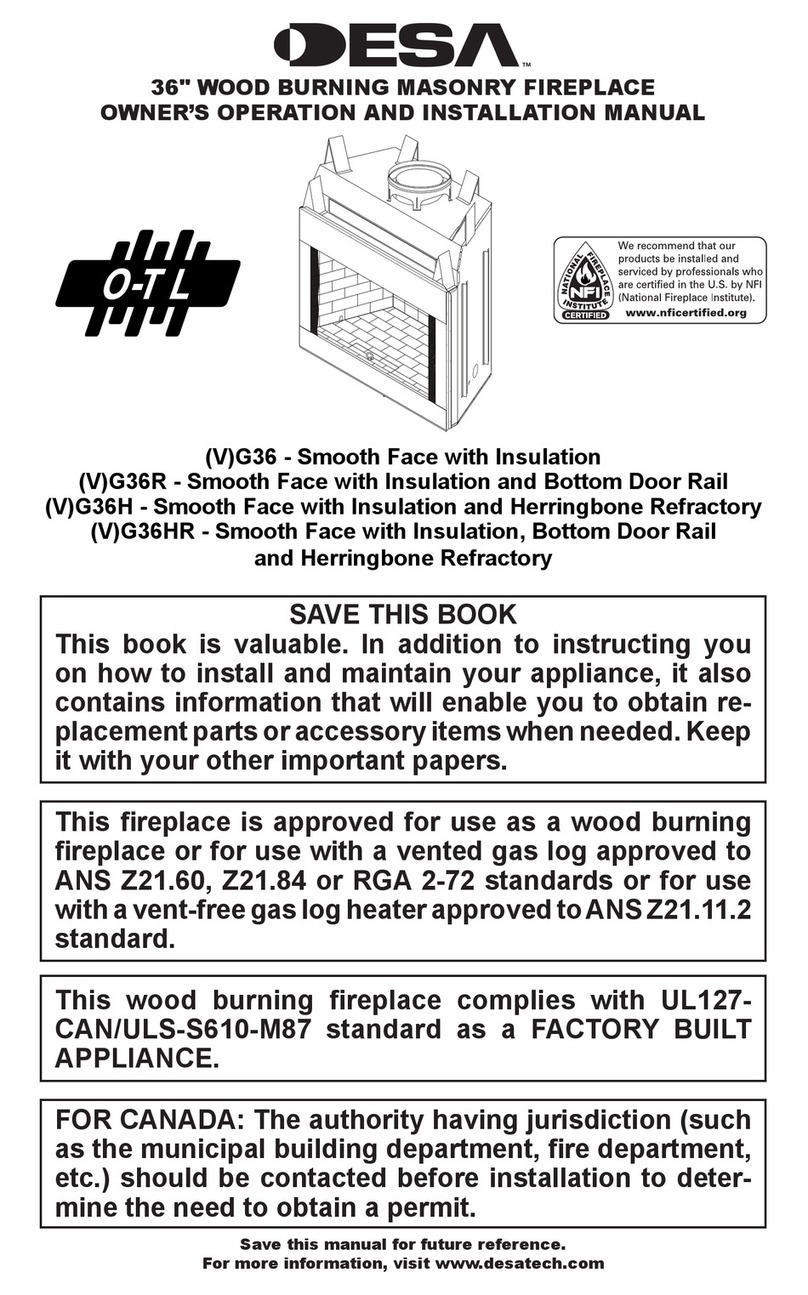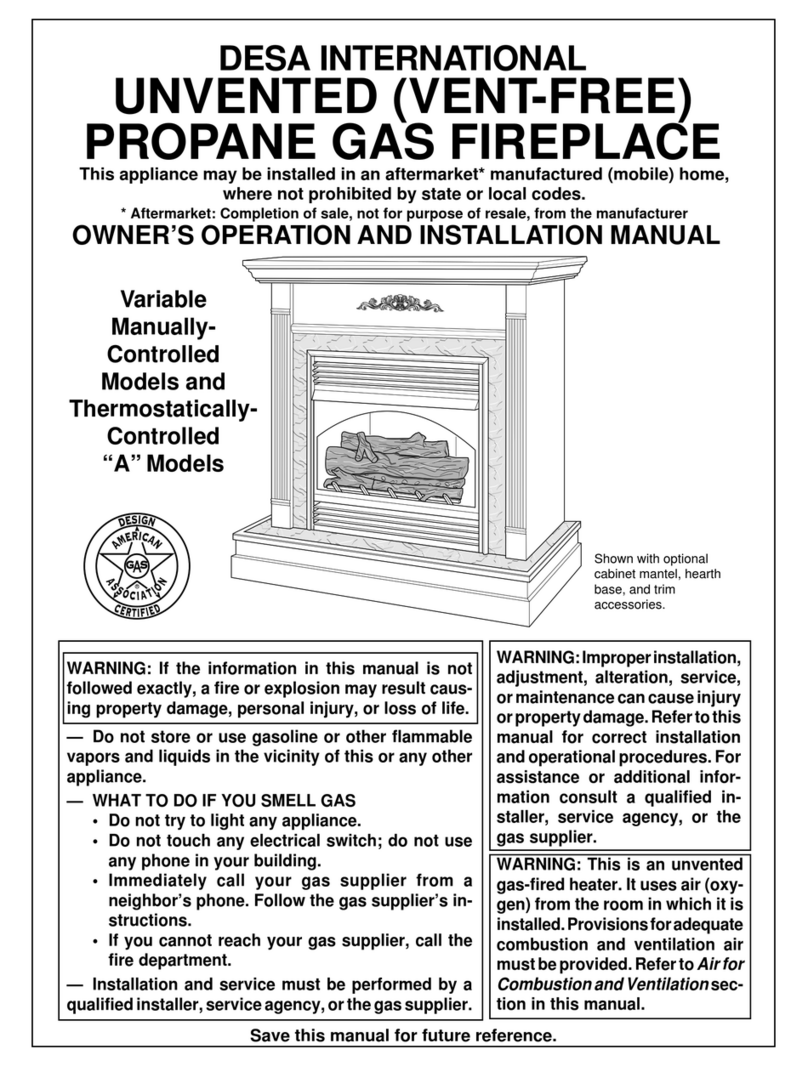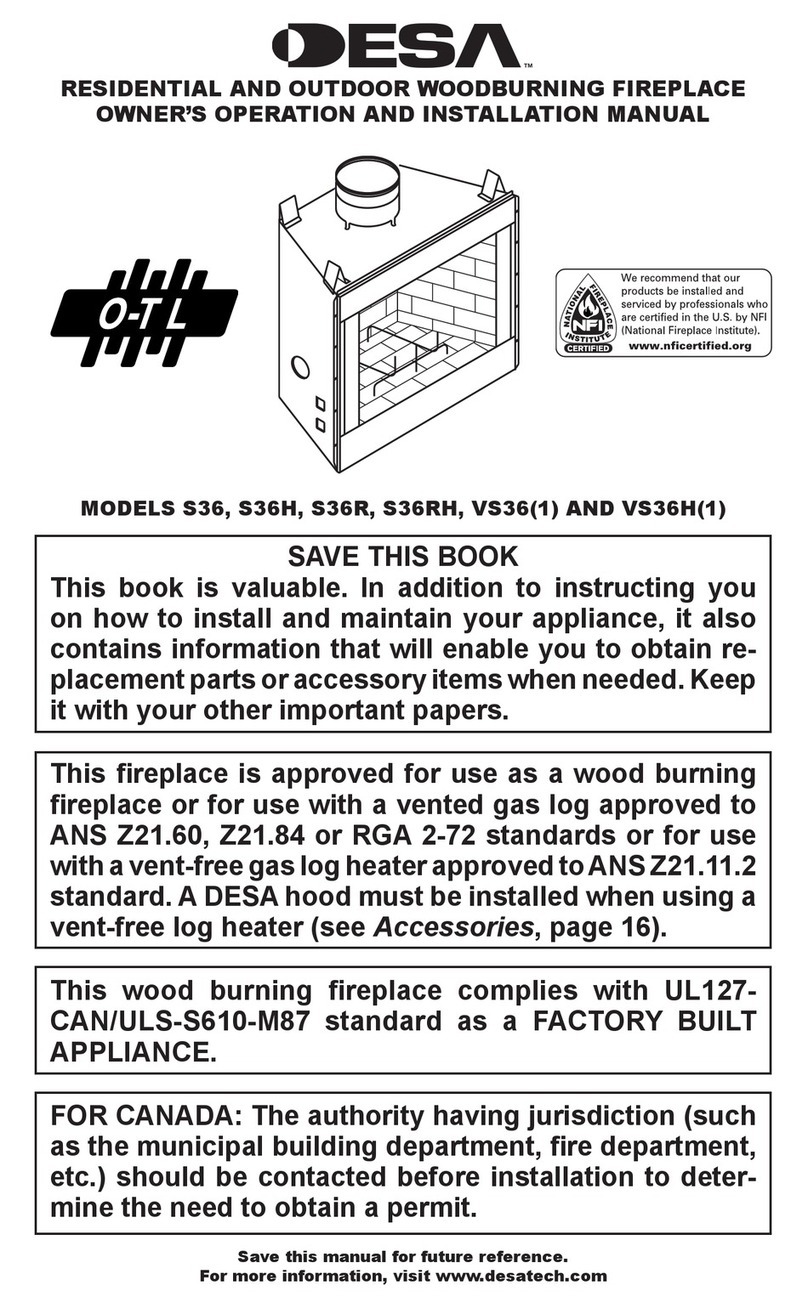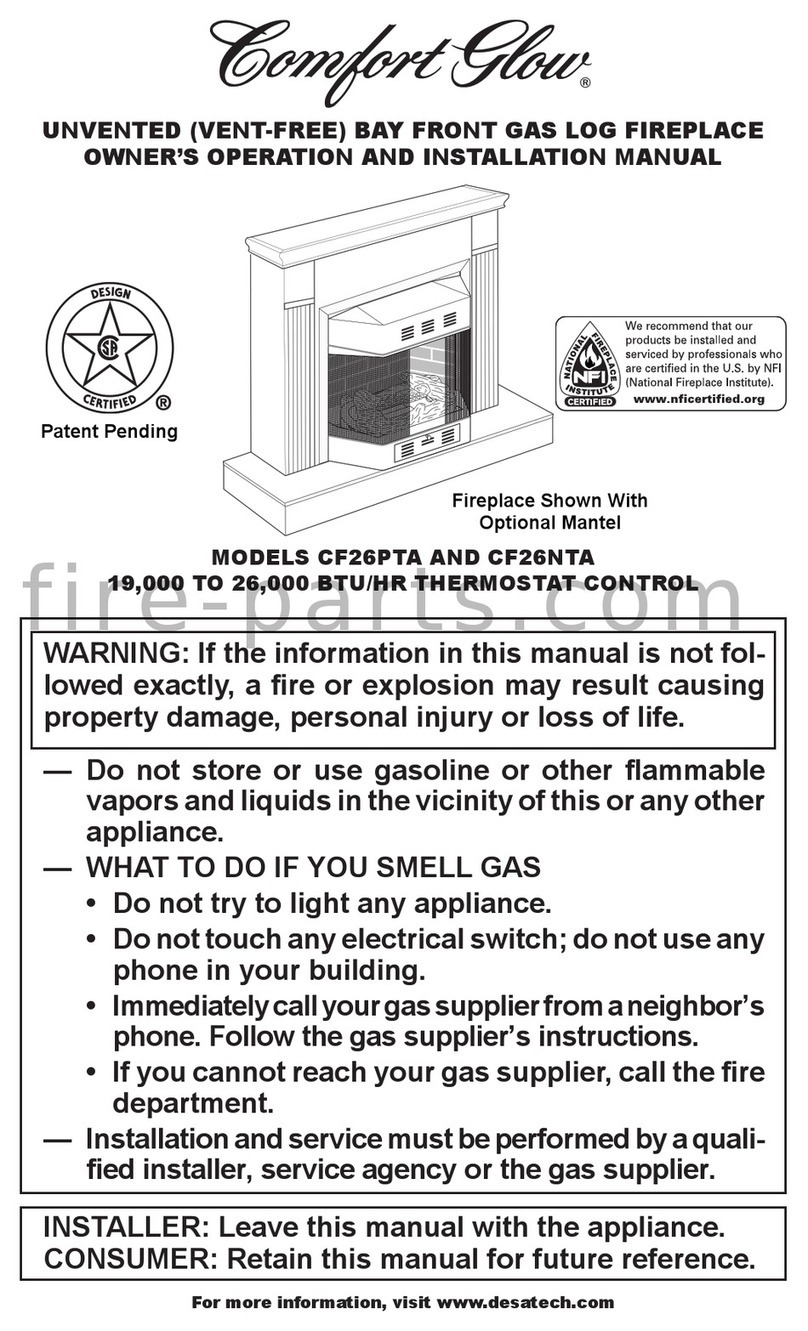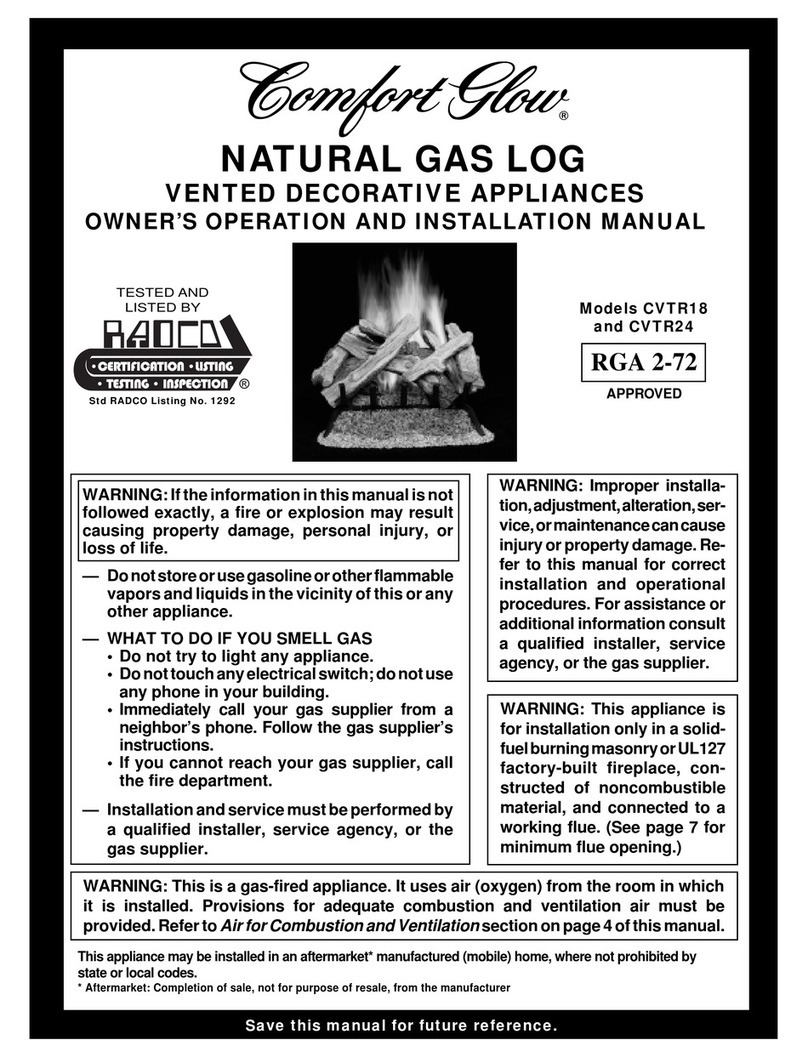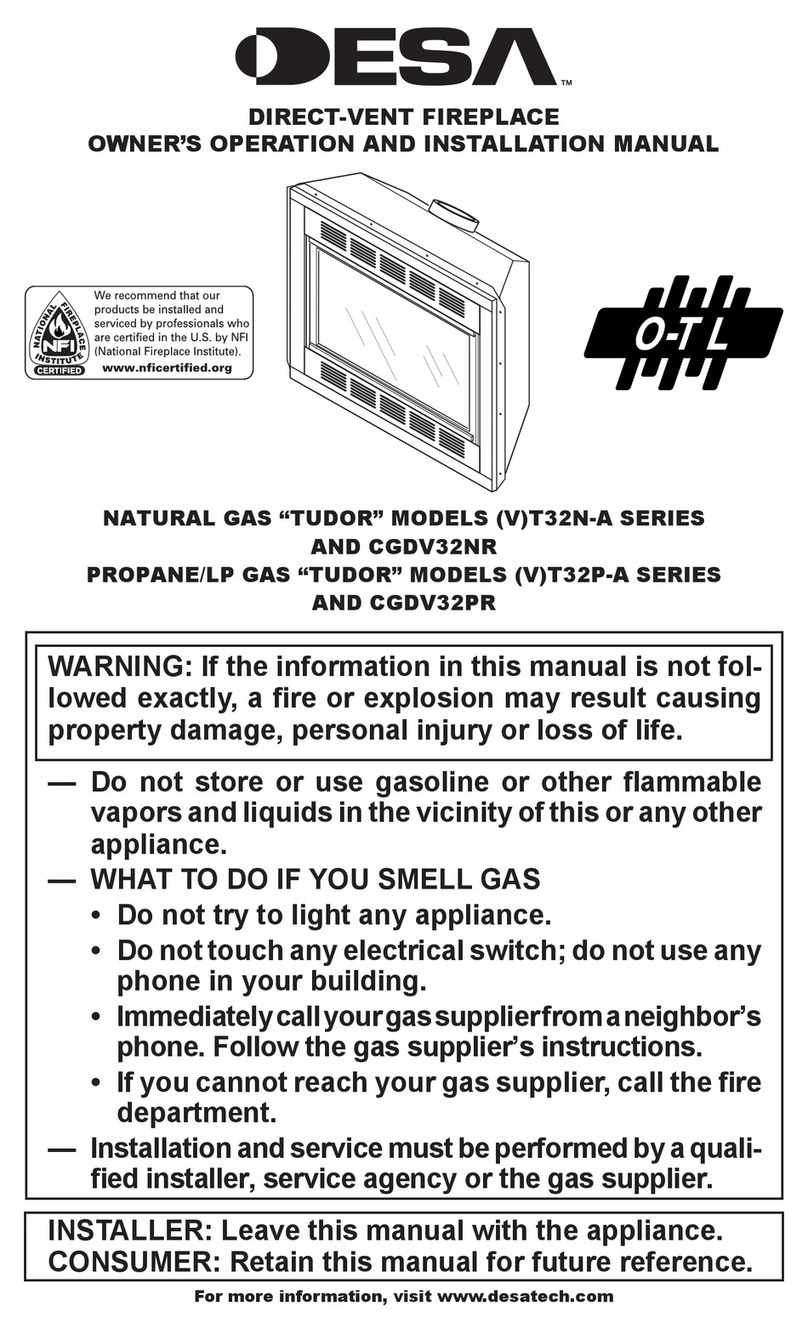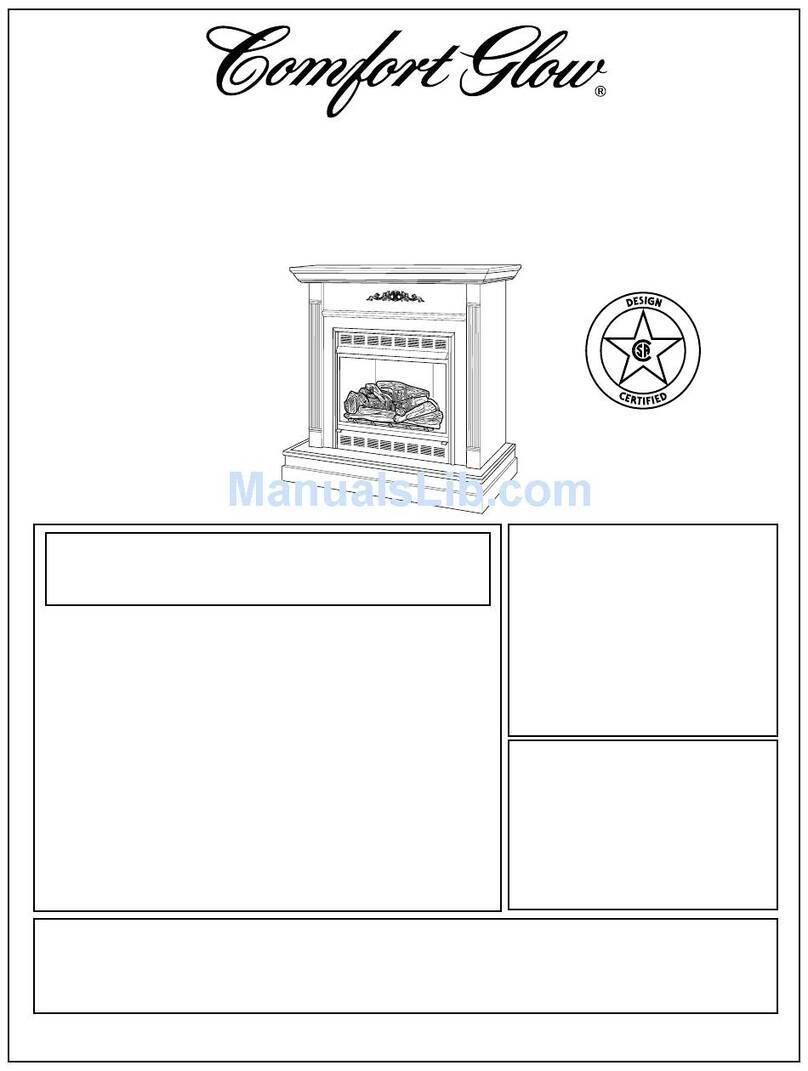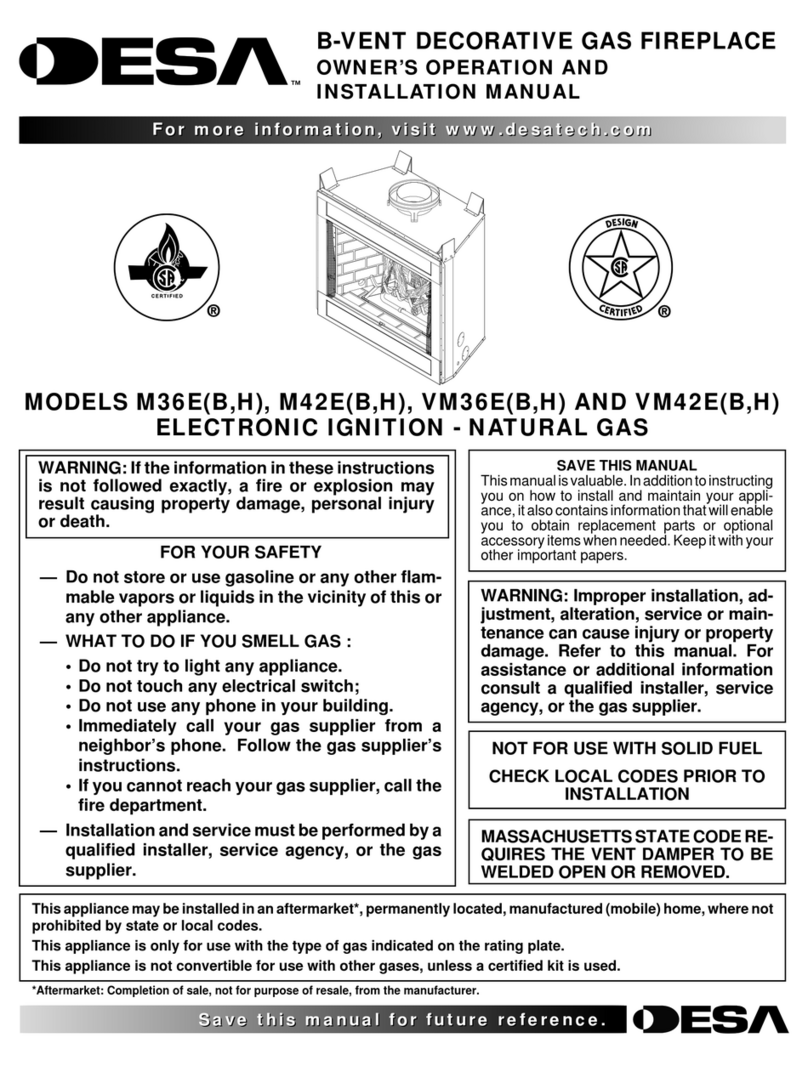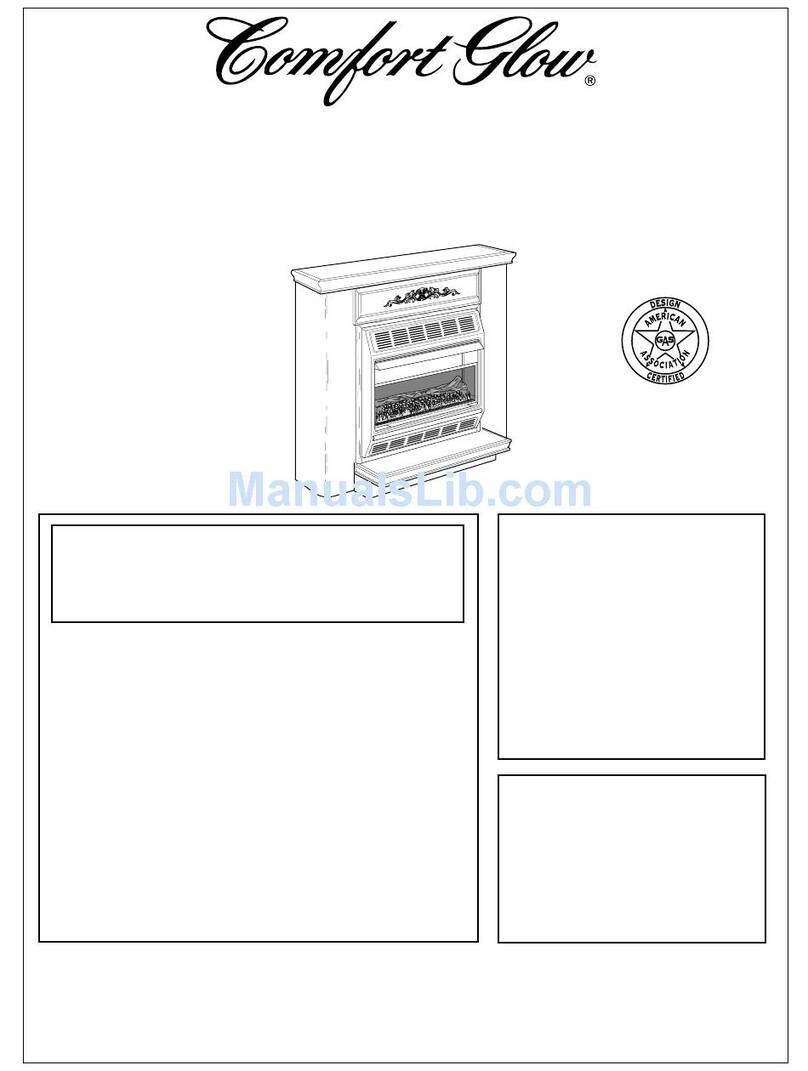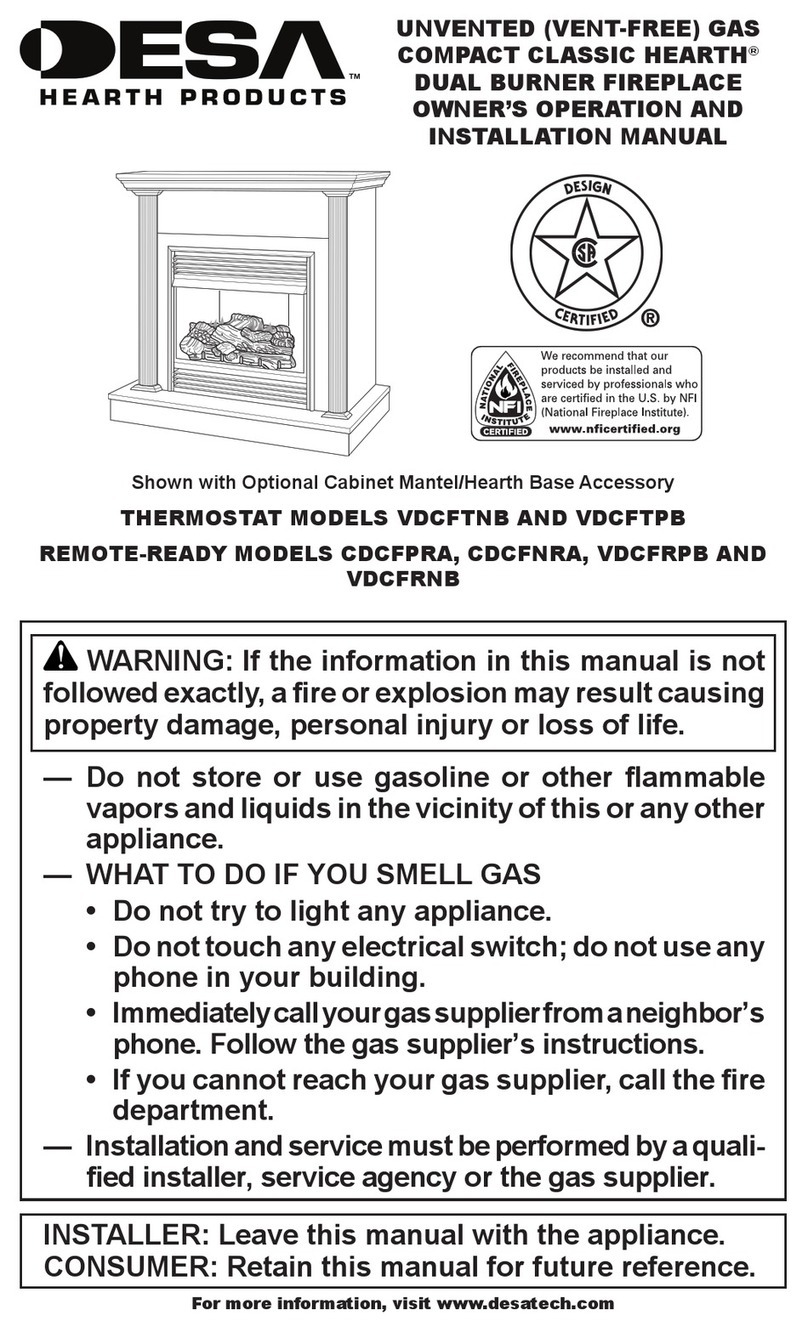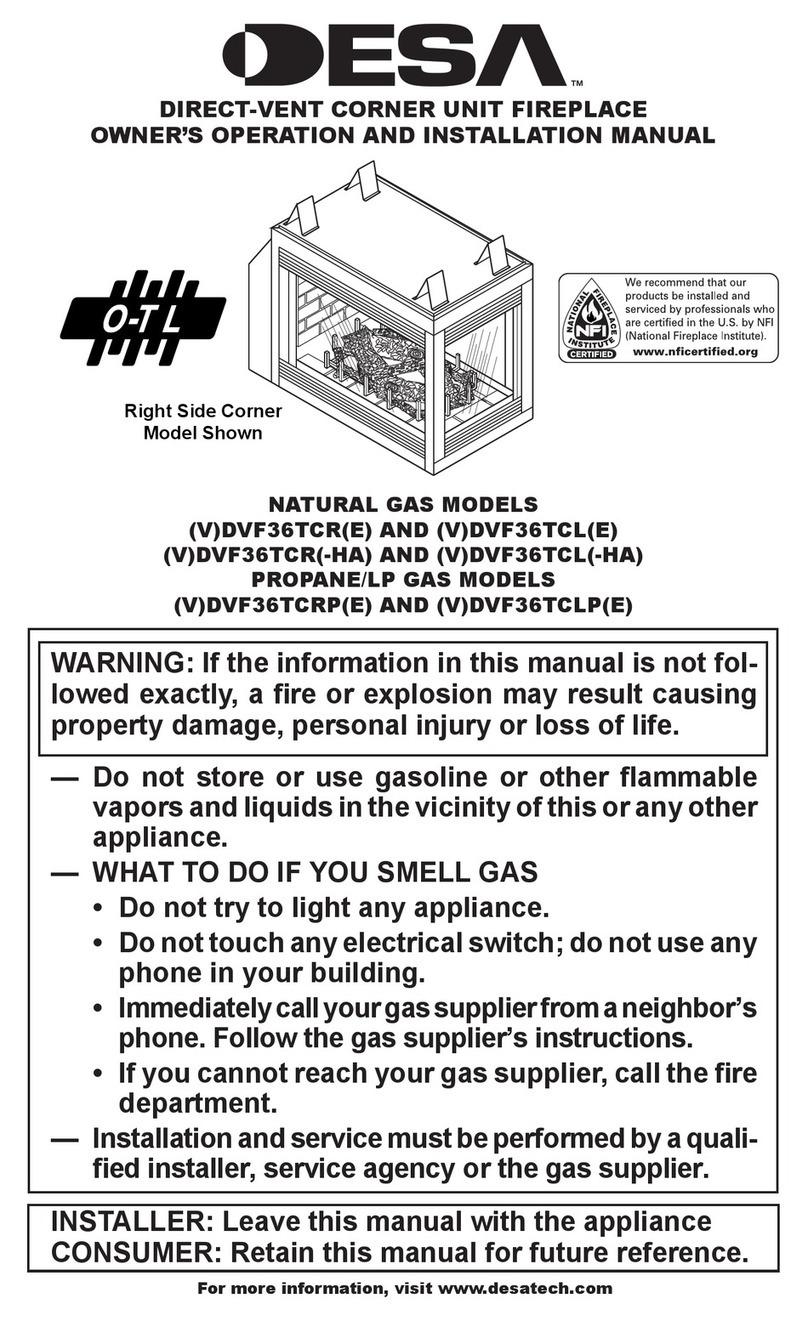
4
103413
UNVENTED (VENT-FREE) NATURAL GAS FIREPLACE
CGFP28N and CGFP28NT
AIR FOR
COMBUSTION AND
VENTILATION
Today’s homes are built more energy effi-
cient than ever. New materials, increased
insulation, and new construction methods
helpreduceheatlossinhomes.Homeowners
weatherstripandcaulkaroundwindowsand
doorstokeepthecoldairoutandthewarmair
in. During heating months, home owners
want their homes as airtight as possible.
While it is good to make your home energy
efficient,yourhomeneedstobreathe.Fresh
air must enter your home. All fuel-burning
appliances need fresh air for proper com-
bustion and ventilation.
Exhaustfans,fireplaces,clothesdryers,and
fuel burning appliances draw air from the
house to operate. You must provide ad-
equate fresh air for these appliances. This
will insure proper venting of vented fuel-
burning appliances.
PROVIDING ADEQUATE
VENTILATION
The following are excerpts from National
Fuel Gas Code. NFPA 54/ANS Z223.1, Sec-
tion5.3,AirforCombustionandVentilation.
Allspacesinhomesfallintooneofthethree
following ventilation classifications:
1. Unusually Tight Construction
2. Unconfined Space
3. Confined Space
The information on pages 4 through 6 will
help you classify your space and provide
adequate ventilation.
Unusually Tight Construction
The air that leaks around doors and win-
dows may provide enough fresh air for
combustion and ventilation. However, in
buildings of unusually tight construction,
you must provide additional fresh air.
WARNING: This heater shall
notbeinstalledinaconfinedspace
or unusually tight construction
unlessprovisionsareprovidedfor
adequatecombustionandventila-
tionair.Readthefollowinginstruc-
tions to insure proper fresh air for
this and other fuel-burning appli-
ances in your home.
PRODUCT
FEATURES
OPERATION
This vent-free fireplace is clean burning. It
requires no outside venting. There is no heat
loss out a vent or up a chimney. Heat is
generated by both realistic flames and glow-
ingembers.Thefireplacerequiresnoelectric-
itymakingitidealforemergencybackupheat.
SAFETY FEATURES
This fireplace has a pilot with an Oxygen
Depletion Sensor Shutoff System (ODS).
TheODS/pilotisarequiredfeatureforvent-
freeroomheaters.TheODSsystemprotects
against oxygen depletion and any interrup-
tion in the fuel supply. If either occurs, the
ODS shuts off gas flow to the burner, turn-
ing the fireplace off. An internal regulator
controls fluctuations in your gas pressure.
PIEZO IGNITION SYSTEM
This fireplace has a piezo ignitor. This sys-
tem requires no matches, batteries, or other
sources to light fireplace.
THERMOSTAT CONTROL
(CGFP28NT)
These fireplaces have a thermostat sensing
bulb and a control valve. The thermostat
controls the heat output and flame height.
This maintains a consistent room tempera-
ture. Even the lowest setting provides real-
istic flames and glowing embers from two
burners. Selecting higher comfort settings
allows the fireplace to run longer, produc-
ing greater heat output. At lower comfort
settings, the fireplace will run less. This
results in increased heating comfort. This
can also result in lower gas bills. An op-
tionalthermostatically(GA3650T)ormanu-
ally (GA3750) controlled blower is avail-
able (see Accessories, page 25).
VARIABLE MANUAL
CONTROL (CGFP28N)
These fireplaces have a variable manual con-
trol valve which allows the user to choose the
heat setting that best suits his needs. Any
settingbetween low and high may be selected
by simply turning the control knob. An op-
tional manually controlled blower (GA3750)
is available (see Accessories, page 25).
Unusually tight construction is de-
fined as construction where:
a. walls and ceilings exposed to the
outside atmosphere have a con-
tinuous water vapor retarder with
a rating of one perm (6x10-11 kg per
pa-sec-m2) or less with openings
gasketed or sealed
and
b. weather stripping has been added
on openable windows and doors
and
c. caulking or sealants are applied to
areas such as joints around win-
dow and door frames, between
sole plates and floors, between
wall-ceiling joints, between wall
panels, at penetrations for plumb-
ing, electrical, and gas lines, and
at other openings.
If your home meets all of the three
criteria above, you must provide ad-
ditional fresh air. See
Ventilation Air
From Outdoors
, page 6.
If your home does not meet all of the
three criteria above, proceed to
De-
termining Fresh-Air Flow For Fire-
place Location
, page 5.
Confined Space and Unconfined
Space
The National Fuel Gas Code ANS Z2123.1,
1992 Section 5.3) defines a confined space
as a space whose volume is less than 50
cubicfeetper1,000Btuperhour(4.8m3per
kw) of the aggregate input rating of all
appliances installed in that space and an
unconfined space as a space whose volume
is not less than 50 cubic feet per 1,000 Btu
per hour (4.8 m3per kw) of the aggregate
inputratingofallappliancesinstalledinthat
space.Roomscommunicatingdirectly with
the space in which the appliances are in-
stalled*, through openings not furnished
with doors, are considered a part of the
unconfined space.
This heater shall not be installed in a con-
fined space or unusually tight construction
unlessprovisions are providedfor adequate
combustion and ventilation air.
*Adjoiningroomsarecommunicatingonly
iftherearedoorlesspassagewaysorventila-
tion grills between them.
